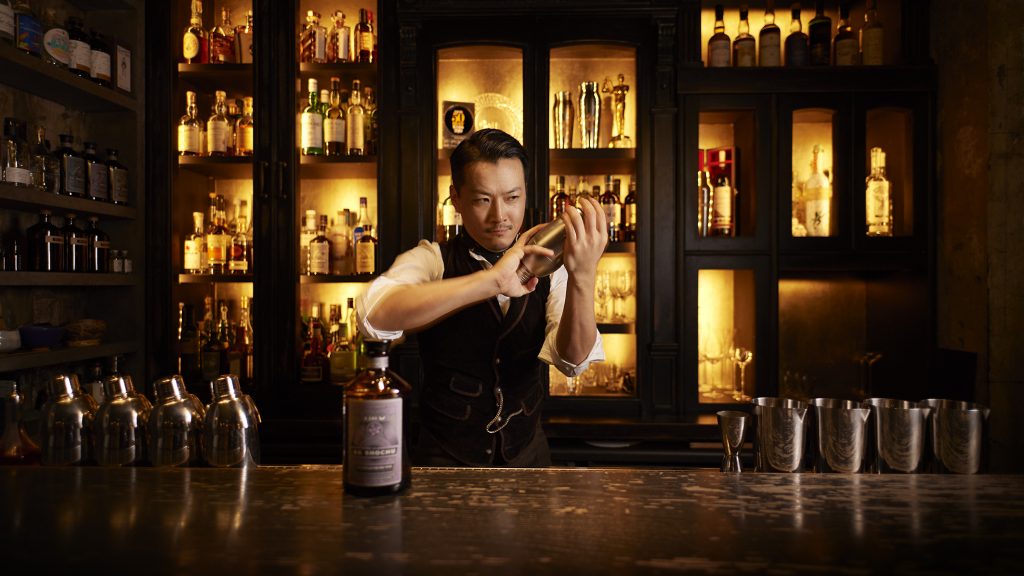I remember the first time meeting Shingo Gokan. We were both part of the opening “team” at SakaMai in the Lower East Side. By that time Shingo had already been bartending at the legendary Angel’s Share speakeasy in the East Village for 6 years. The previous year he had won the 2012 Bacardi Legacy Global Cocktail Competition, which put him on the map as one of best bartenders in the world. Me? I was a shochu blogger who had never worked in a restaurant in my life.

And yet Shingo was extremely gracious when we met. He took the time to have a conversation about my interest in shochu and we talked at length about his cocktail menu concept for SakaMai. Over the next few years we would see each other at events and otherwise stay in touch through Facebook messages of encouragement or congratulations.
I began my weekly Shochu Tuesday happy hours at SakaMai where they continued until 2017. During that time a young man joined the service team. His name was Joshin Atone. Shingo quickly spotted Joshin’s dedication, hospitality, and service skills and poached him for Angel’s Share.
Within a couple years Shingo had turned into a global bartender, traveling the world with only occasional returns to NYC. I would try to stop by Angel’s Share or SakaMai if I knew he was behind the bar. One evening I took up an end seat at the Angel’s Share Annex and spent the better part of a couple hours encouraging him to make a shochu cocktail, which until that time Angel’s Share had not had on its menu.
Off to Shanghai
The next time I was back in Angel’s Share he brought me his shochu cocktail. I was humbled that he had taken the time. But that was the end of our discussions about shochu. Shingo would take a small team to Shanghai to open Speak Low. He would later bring Joshin to Shanghai to help open Sober Company, both of which are now on the World’s 50 Best Bars list.

When I visited Shanghai in 2018, I stopped by Sober Company’s restaurant bar, which Joshin was running, every night of my visit. He seemed to enjoy the challenge of living in China and, of course, was very curious about where my shochu journey was taking me. We talked about Shingo’s bar concepts which are invariably like peeling an onion – layer upon layer of surprises. Speak Low hides a three-story bar behind a cocktail bar tool shop. If you tell the clerk you’re thirsty, he reaches behind him and pulls aside the bookcase to reveal a long hallway. Sober Company has a cafe on the ground floor. Two doors read “Hungry” and “Full”. The Hungry door takes you to a restaurant. The Full door takes you to a bar for after-dinner drinks. If you spend enough time in Sober Company you may just unlock other surprises.
Now Tokyo
Shingo doesn’t seem to be able to sit still. Within three years of opening Speak Low in Shanghai, he was opening The SG Club in Tokyo. No, the S and G do not stand for Shingo Gokan, but for Sip and Guzzle. Sip is the buttoned-up basement bar that accepts reservations. Guzzle is the casual main floor bar where you can sometimes find Joshin making the drinks. With the new reality of a global pandemic, Sip now serves a world travel cocktail pairing menu–a full course meal from a SakaMai alum.
The Facebook messages from Shingo have gotten less common, but every so often I will hear from him. Now more often from Joshin. They occasionally pop up with questions about shochu distilleries or predominant styles (sweet potato, barley, rice, etc.). Their social media would show them in Kyushu. Turns out they were busy with a new project: The SG Shochu.
The SG Shochu
For just about as long as I have been interested in shochu I have heard that one of the biggest avenues to greater market share overseas is through cocktails. There is one big problem. Most shochu is bottled at just 25% alcohol. And those that aren’t are usually bottled at 20% or 30% alcohol. Undiluted, full-proof shochu of 35-45% alcohol is quite uncommon in Japan. There are a lot of reasons for this, but nevertheless it means that most shochu does not lend itself to being a cocktail base.

Shingo and Joshin have known this for a long time and therefore they have decided to do something about it. They created The SG Shochu, a line of three premium overproof shochu clocking in at 38-40% alcohol. The brilliance of The SG Shochu line is not just that they are high proof, but that in just three products they have managed to create a line of shochu that expresses the diversity of the category. We will save the actual reviews for future posts (the next three days actually), but these videos should give you a sense of the brands. The first one will introduce you to Shingo himself.